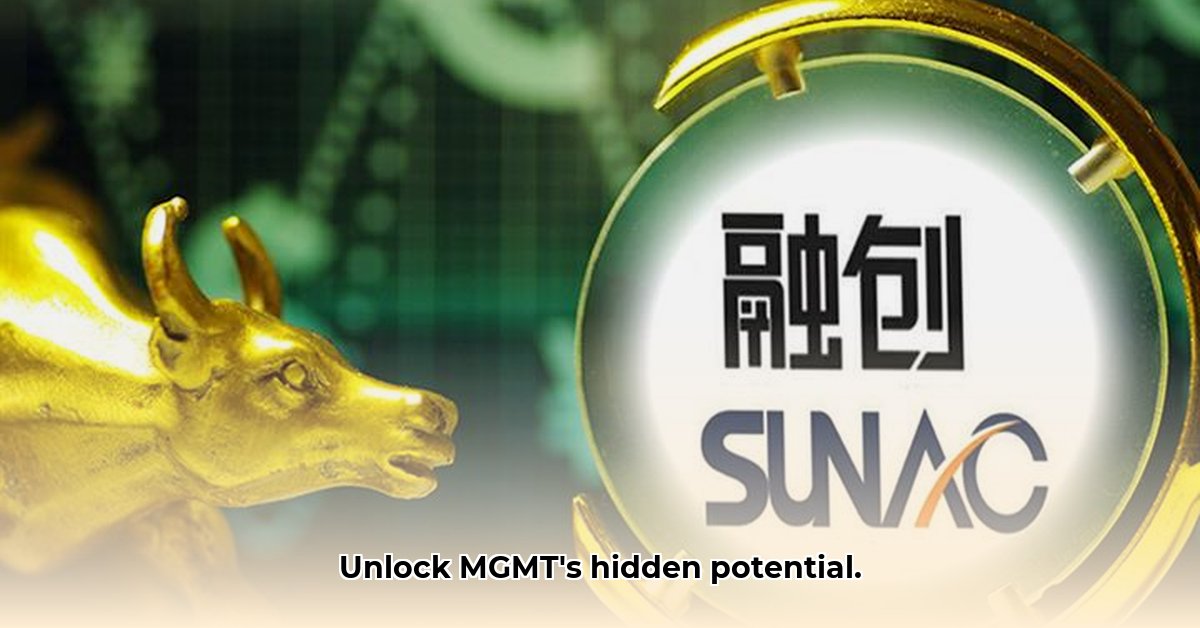
Thinking about adding exposure to small and mid-sized US companies to your portfolio? This review delves into the Ballast Small/Mid Cap ETF (MGMT), examining its strengths, weaknesses, and suitability for different investor profiles. We'll analyze its strategy, fees, and risk factors, ultimately providing actionable insights to help you decide if MGMT is right for you. For more on market analysis, see this helpful resource: Market insights.
Understanding MGMT's Investment Strategy
MGMT invests primarily (approximately 80%) in small and mid-cap US companies, aiming for capital preservation while generating long-term growth. This conservative approach prioritizes risk mitigation, potentially limiting upside during periods of strong market growth. However, this strategy could also help to minimize losses during market downturns. Is this risk/reward profile suitable for your investment goals?
Fee Analysis: A Critical Consideration
MGMT's expense ratio is a key factor to consider. While currently reduced to 1.10% due to a fee waiver expiring January 31, 2025, it will revert to a higher rate thereafter. This necessitates a thorough comparison with competing ETFs. How will the post-waiver expense ratio impact your long-term returns? Is the potential performance upside sufficient to justify the higher expense ratio compared to lower-cost alternatives?
The Management Team: Experience and Expertise
The management team's experience and investment philosophy form an integral part of MGMT's performance. While a neutral rating suggests a moderate level of confidence in their capabilities, past performance does not guarantee future results. Thorough due diligence on the management team's track record and investment approach is crucial. What are their core competencies, and how consistent has their performance been throughout various market cycles?
Risk Assessment: Potential Downsides of Investing in MGMT
Investing in any ETF inherently involves risks. With MGMT, key risks include:
| Risk Factor | Likelihood | Potential Impact | Mitigation Strategies |
|---|---|---|---|
| High Fees (post-2025) | Likely | Significant | Compare fees with similar ETFs; consider alternatives with lower expense ratios. |
| Market Volatility | Moderate | Moderate | Diversify your portfolio across different asset classes and market caps. |
| Underperformance | Moderate | Moderate | Regularly monitor performance against benchmarks; rebalance your portfolio as needed. |
| Regulatory Changes | Unlikely | Potentially High | Stay informed about relevant regulatory changes impacting the ETF's activities. |
Is MGMT Right for You? Investor Profile Considerations
MGMT may be suitable for investors who:
- Prioritize capital preservation: If minimizing losses is paramount, MGMT's conservative approach might appeal.
- Have a long-term investment horizon: The impact of higher fees is lessened over longer time periods.
- Already maintain a diversified portfolio: MGMT should not be your sole investment; it complements a broader strategy.
Actionable Steps: A Roadmap for Decision-Making
Before investing in MGMT, consider these steps:
- Comprehensive Fee Comparison: Don't solely focus on the current expense ratio. Compare the projected costs post-2025 against competitors.
- Risk Tolerance Assessment: Honestly evaluate your ability to withstand potential short-term losses.
- Portfolio Diversification: Ensure MGMT is part of a larger, well-diversified portfolio.
- Ongoing Performance Monitoring: Regularly track MGMT's performance against relevant benchmarks and adjust your strategy if necessary.
The Bottom Line: A Balanced Perspective
MGMT offers a unique approach to small-cap investing by emphasizing capital preservation. However, the higher expense ratio (post-2025) demands careful consideration. Whether MGMT aligns with your investment goals hinges on your individual risk tolerance, investment horizon, and overall portfolio strategy. Thorough research and due diligence are critical before making any investment decisions. Remember, this isn't financial advice; consult with a financial advisor for personalized guidance.
How to Mitigate High Fees in Ballast Mgmt Small-Cap ETF Investments
Key Takeaways:
- MGMT's fundamentally driven approach focuses on small and mid-cap U.S. companies.
- Its active management strategy aims for risk-adjusted returns, but volatility is inherent in small-cap investing.
- The current fee waiver significantly impacts how to mitigate high fees—exploit this window of opportunity!
- Post-2025, increased expenses necessitate a reevaluation of long-term cost-benefit.
- Due diligence on the fund's management and ongoing performance monitoring are vital.
Strategies for Fee Mitigation: Maximizing Your Investment
- Strategic Timing: Invest before the fee waiver expires to capitalize on lower costs.
- Long-Term Value Assessment: Project the fund's potential post-waiver returns against the elevated expense ratio. Is it still worth it?
- Alternative ETF Exploration: Research similar small-cap ETFs with lower expense ratios.
- Portfolio Diversification: Mitigate risk by diversifying across different asset classes and investment strategies.
Risk Mitigation: Managing the Inherent Volatility
Small-cap investing is inherently riskier than large-cap. Here's a concise risk assessment for MGMT:
| Risk Category | Likelihood | Impact | Mitigation |
|---|---|---|---|
| Market Risk | High | High | Diversify your portfolio. |
| Liquidity Risk | Medium | Medium | Monitor market conditions; trade strategically. |
| Management Risk | Medium | Medium | Research the management team’s expertise. |
| Expense Ratio Risk | Low (until 2025) | Medium | Monitor and reassess post-2025. |
Actionable Steps for Informed Investment Decisions
- Thorough Research: Understand Ballast's investment philosophy and risk management practices.
- Performance Review: Analyze MGMT’s historical performance relative to its benchmarks.
- Competitive Analysis: Compare MGMT with other small-cap ETFs.
- Diversification Strategy: Create a well-diversified portfolio to minimize risk.
- Continuous Monitoring: Track the fund's performance, expense ratio, and adjust your allocation based on performance.